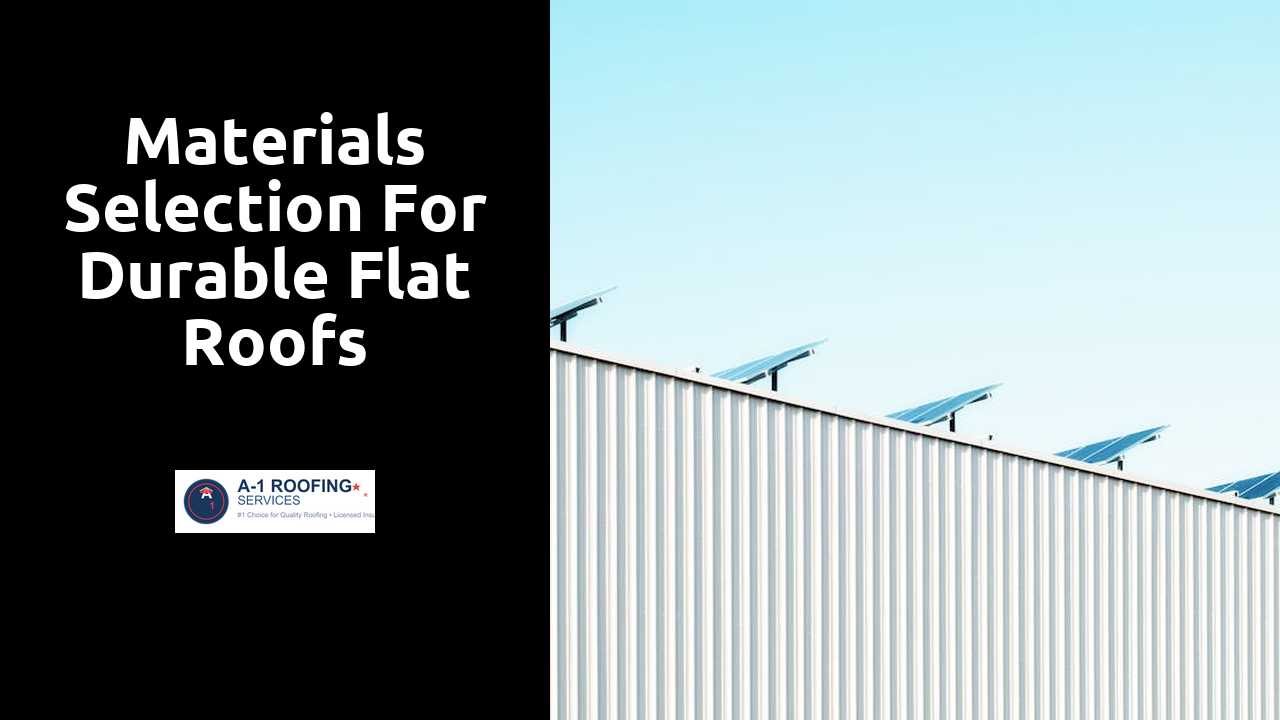
Materials Selection for Durable Flat Roofs
Table Of Contents
Benefits of Built-Up Roofing
Built-up roofing (BUR) systems offer a number of advantages that make them a popular choice for flat roofs. Their layered construction enhances durability and provides robust weather protection. Sustained exposure to UV rays and harsh weather conditions does little to compromise their integrity. Additionally, the inherent weight of BUR systems can contribute to greater stability, reducing the risk of damage from high winds.
Another significant benefit is their versatility in application. Built-up roofing can accommodate a variety of materials and insulation options, allowing for customization based on specific building requirements. The multilayered design also provides increased sound insulation, which is especially advantageous in urban environments. Furthermore, once installed, BUR systems can require minimal maintenance, making them a cost-effective solution over the lifespan of the roof.
View this external resource for great tips and advice.
Construction and Durability Factors
The construction of flat roofs involves various techniques and materials that significantly impact their longevity and performance. Common methods include the application of membranes or layering of materials, which provide structural integrity and weather resistance. Proper installation is crucial, as it ensures that the roof can withstand harsh weather conditions, including heavy rains and snow loads. Attention to detail during construction, such as flashings and sealants, plays an essential role in preventing leaks and water damage.
Durability factors depend on both the materials chosen and the quality of workmanship. In addition to traditional options like asphalt and fiberglass membranes, newer materials such as thermoplastic polyolefin (TPO) and ethylene propylene diene monomer (EPDM) are gaining popularity for their strength and flexibility. Regular maintenance, including inspections and timely repairs, can further enhance the lifespan of flat roofs, ensuring they remain functional and effective over decades. Building codes and standards also guide optimal construction practices, helping to create roofs that meet safety and durability requirements.
Green Roofing Systems
Green roofing systems are gaining popularity for their environmental benefits and aesthetic appeal. These systems can be designed with vegetation that provides insulation, reduces stormwater runoff, and improves air quality. By incorporating plant life, buildings can enhance biodiversity and create habitats for urban wildlife. Moreover, green roofs contribute to the urban heat island effect mitigation, helping to cool cities in hotter months.
The choice of materials for green roofs is crucial to their longevity and effectiveness. Lightweight growing media, waterproofing membranes, and proper drainage systems are essential components that ensure the roof's durability. Selecting native plants can optimize performance, as these species are typically more resilient and require less maintenance. Ultimately, a well-designed green roofing system offers not just an eco-friendly solution but also a unique opportunity to enrich urban environments.
Eco-Friendly Materials and Benefits
Sustainable roofing materials are gaining popularity due to their minimal environmental impact. Products derived from recycled content, such as rubber or plastic, provide durability while diverting waste from landfills. Additionally, renewable resources like bamboo and reclaimed wood offer alternatives that reduce the demand for virgin materials, supporting ecological balance. These materials not only help minimize the carbon footprint but also contribute to a circular economy.
Adopting eco-friendly roofing options brings significant long-term benefits. Many of these materials improve energy efficiency, leading to reduced heating and cooling costs. With better insulation properties, green roofs can mitigate urban heat island effects, promoting a more temperate climate in urban areas. Furthermore, incorporating vegetation in green roofs enhances biodiversity, providing habitats for local wildlife while improving air quality. The overall advantages extend beyond individual buildings to benefit entire communities.
Reflective Roofing Options
Reflective roofing materials play a pivotal role in enhancing energy efficiency for commercial and residential buildings. These roofing options often feature light-colored surfaces or special coatings designed to reflect rather than absorb sunlight. By reducing heat absorption, these roofs contribute significantly to lowering indoor temperatures during peak summer months. This results in decreased reliance on air conditioning systems, which leads to lower energy costs and a reduction in greenhouse gas emissions.
In addition to their energy-saving benefits, reflective roofs also help in prolonging the lifespan of the roofing materials. By minimizing heat buildup, these options reduce thermal expansion and contraction, which can compromise roof integrity over time. The extended life expectancy not only saves on replacement costs but also minimizes the environmental impact associated with manufacturing and disposing of roofing materials. Homeowners and building managers increasingly recognize the importance of such reflective roofing systems as part of sustainable building practices.
Temperature Regulation and Energy Savings
One of the key advantages of reflective roofing materials is their ability to keep indoor spaces cooler during hot weather. These materials work by reflecting sunlight rather than absorbing it, which can significantly reduce the temperature of the roof surface. This property results in less heat being transferred into the building, ultimately lowering the demand for air conditioning. Homeowners can experience a noticeable decrease in energy costs during the peak summer months, leading to a more comfortable living environment.
In cooler climates, reflective roofing options still offer benefits through energy efficiency. By minimizing heat absorption in warm months, buildings do not retain excess heat that would need to be compensated for in the colder seasons. This balance helps maintain stable indoor temperatures, reducing the workload on heating systems during the winter. Overall, implementing reflective roofing can contribute to significant energy savings across seasons while promoting a sustainable approach to building design.
Related Links
Common Mistakes to Avoid in Flat RoofingEssential Tools for Flat Roofing Installation